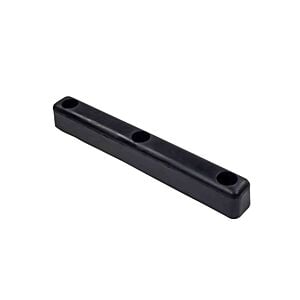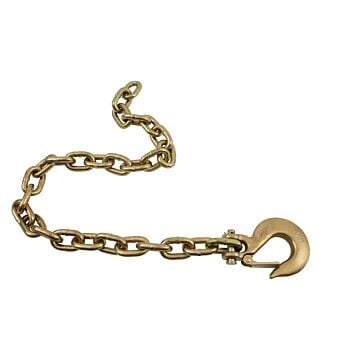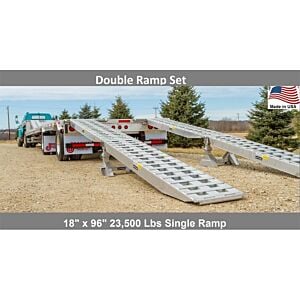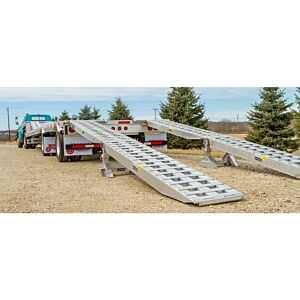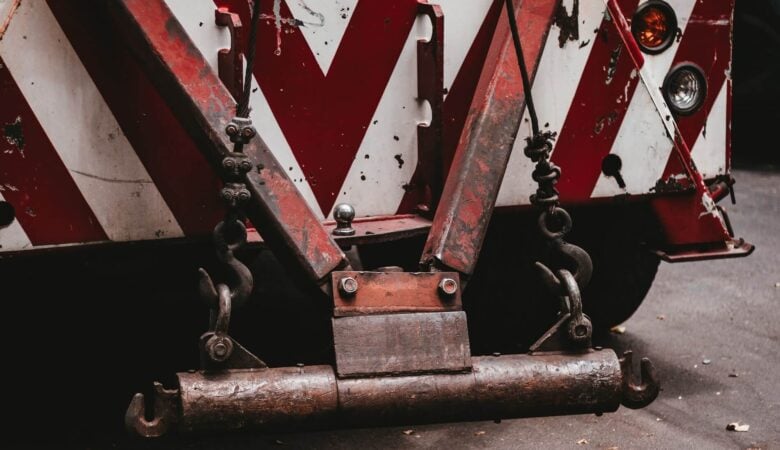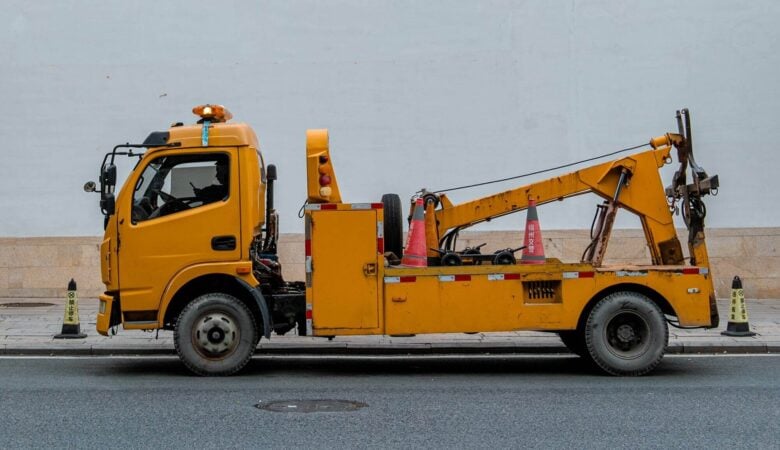If there’s one thing life is good at, it’s throwing us curveballs. If there’s one place you don’t want to run into an obstacle though, it’s one the road. When you come into a problem with a vehicle that needs to be towed the best option for you will be the use of a tow truck. However, what do you do if a tow truck isn’t a viable option?
The answer is surprisingly simple: use a car or truck! While it’s far safer and recommended to use a tow truck or trailer, a commercial car can also be used in very specific and desperate situations. No matter what causes a vehicle to stop in the first place, having a car or truck that can tow it properly will save you a world of headaches. Below are some helpful tips, information, and steps to help you learn how to tow a car with a truck safely!

Vital Things to Consider Before Towing a Car with Truck
There are some important factors you need to take into consideration before you attempt to pull a vehicle with another car. Ensure that you have the proper and reliable towing tools available before you begin the process, as the last thing you want when towing a vehicle is to lose your grip during transit, or damage the vehicle or equipment if improperly applying the tools.
1. Know Your Maximum Towing Capacity
Knowing your car or truck towing capacity is a determining factor when figuring out if you can safely tow a vehicle. Your truck’s towing capacity is the maximum weight it can haul safely, which is information that should be found in the owner’s manual or specifications sticker located on the driver’s side door. If the car you’re trying to pull exceeds the towing capacity of your truck, you risk damaging either or both vehicles in a towing attempt.
2. Check Your Tow Hitch Specification

If you’ve checked your truck’s towing capacity and determined that the vehicle you need to tow doesn’t exceed your capacity, you’re not out of the woods yet. While your car may be able to handle the weight of another vehicle, your tow hitch might not. You can find the towing weight capacity of your tow trailer hitch on a specification sticker located on the hitch. Even if your truck can handle the weight, a weak tow hitch can render your work very difficult, if not useless.
3. Know the Car Towing Laws
The laws regarding towing a car with another car or truck can vary from state to state. It’s important to check the codes and regulations of whichever state you’re in before you begin towing. Here are the most common laws you should know, taken from the Ohio Laws and Administration Rules website.
- When a vehicle is towing another vehicle, the drawbar or other connection shall be of sufficient strength to pull all the weight towed thereby, and the drawbar or other connection shall not exceed fifteen feet from one vehicle to the other.
- When one vehicle is towing another and the connection consists only of a chain, rope, or cable, there shall be displayed upon such connection a white flag or cloth not less than twelve inches square.
- Every trailer or semitrailer…. which shall be so designed and constructed that the trailer will follow substantially in the path of the vehicle drawing it, without whipping or swerving from side to side.
For more information regarding the laws for a vehicle towing another vehicle, always look up your state-specific laws.
4. Use Wheel Chocks

When using a trailer to tow a vehicle, it’s highly recommended to use wheel chocks to prevent or lower the risk of a vehicle coming loose and rolling off the bed. Wheel chocks are specifically designed to keep your vehicle stable during transit, and they can be lifesavers if a chain or strap comes loose during towing.
5. Using Extended Towing Mirrors
Commercial vehicles tend to have blind spots that can end up being a massive danger to someone towing a vehicle or trailer. Depending on the vehicle, the standard factory-installed mirrors may not do much to help you see the rear of your trailer and thus will not help you notice if anything is amiss until it is too late.
A towing mirror is a mirror designed to help a driver see these blind spots and see as far back as possible, and you can find these helpful towing mirrors as extensions you can add to your vehicle’s factory side mirrors. Additionally, most state laws may require a driver to be able to see beyond the rear of a trailer or towing vehicle and to a specific distance. To avoid the risk of getting fined, investing in a towing mirror extension should be considered!
Also Read: 11 Useful Tools to Launch Your Towing Driver Career
6. Use Safety Chains
Using safety chains when towing a vehicle can be a safety net you may not need, but will be happy you have should anything go wrong. If the initial way you plan to tow a vehicle doesn’t work or equipment breaks mid-way through the towing process, safety chains are an extra layer of security designed to prevent the towed vehicle from rolling off or away if a hitch fails. Always use safety chains as part of your tie-down and towing security plan.
Ways to Tow a Car With a Truck
There are many ways that are popular in the trucker community to towing a car with a truck.
Method #1 – Tow Car Using a Tow Dolly
A tow dolly is a very common tool used in the towing industry. Unlike rear-wheel and four-wheel drive cars, a front-wheel-drive car works best when using a tow dolly, as you won’t have to remove the driveshaft in order to tow the vehicle. Here are the proper steps to using an industry-standard tow dolly:
Step 1:
Connect the tow dolly to the hitch on your truck or car. Hand-tighten the dolly’s coupler until it’s securely fastened – you can test if you’ve properly attached the tow dolly to the hitch by slowly accelerating the vehicle forward and testing if the car remains connected.
Step 2:
Make sure the vehicle you’re towing is aligned. Lining up the towed vehicle with your truck before you try to load helps make the process easier and faster. Keeping the vehicle lined up and centered with your truck or car is integral to safely towing the vehicle on the road. Additionally, ALWAYS load a vehicle facing forward as it can whip or sway dangerously if it’s rear-facing.
Step 3:
Load the towed car by driving it, forward-facing, onto a dolly ramp only once you’ve properly centered the vehicle. If the car cannot be driven (broken down, no key, no tires, so on) then you will need to push the vehicle up the dolly ramp. Get assistance before you attempt to push any vehicle.
Step 4:
Once you’ve driven or rolled the vehicle onto the ramp, you need to secure it. The front tires should be firmly placed against wheel stops and strapped down with tire straps. Tighten the straps by opening and closing the ratcheting mechanism of the tire straps. For additional support, use heavy-duty, towing security chains to hook around the car’s frame.
Step 5:
Disengage the parking brake of the towed vehicle so the rear tires can spin freely. If you skip this step, you risk damaging or popping the rear wheels, which could damage the undercarriage or bumper of the vehicle and make towing a much more difficult task.
Method #2 – Tow Car Using a Trailer
When a tow truck isn’t a viable option for moving another vehicle, the next safest method will be the use of a trailer. Trailers are remarkably durable and can handle various vehicles in both security and weight. The trailer towing procedure is very similar to that of the tow dolly, but there are key differences you need to be aware of when learning how to tow a car with a pickup truck or trailer.

Step 1:
You must safely and appropriately attach the trailer to your truck or car. The hitch ball of a truck would rest directly above the tongue of a standard trailer, and this tongue should easily be connected to the hitch ball. Even once you’ve successfully connected the hitch and trailer, we recommend using trucker safety chains by crossing them and hanging the hooks onto the truck or car’s hitch for that extra security.
Then, if and when applicable, connect your trailer’s electrical harness to any sockets on your truck or car. Depending on both the vehicle you’re using to tow and the type of trailer you’re using, there may be no electrical harness or sockets. Plan accordingly, if that’s the case.
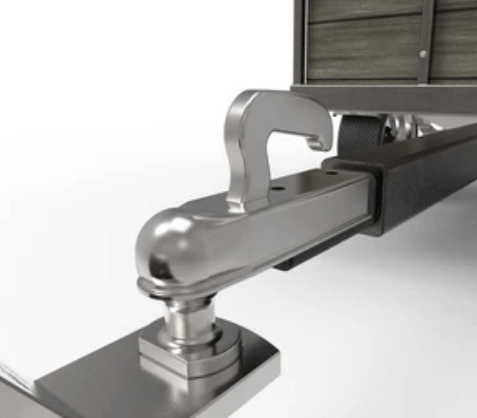
Step 2:
Align the towed car with your trailer. When you attach the trailer, the trailer and truck should already be centered before the connection is made. This will make centering the towed vehicle easier – this is how a tow truck works with most standard models, though the trailer or ramp is usually built-in and designed for the tow truck so there’s no need to center align it.
With a separate trailer, that’s not the case. Slowly drive the towed vehicle up the trailer using a loading ramp or back up the trailer until you’re nearly touching the nose of the towed vehicle.
Step 3:
Once the vehicle is properly aligned with the trailer, slowly drive or push the vehicle up the ramps and onto the trailer. Keep going until ALL of the four tires are on the vehicle, never let the rear wheels hang near the edge of the trailer and risk a bump or hard stop sending the car over the edge.
Step 4:
Set the vehicle in park and engage the parking brake. Unlike the tow dolly steps, you won’t have to disengage the parking brake at any point. Use ratchet straps and/or safety trucker chains on each wheel to secure the vehicle to the trailer using anchor points build into the trailer. For additional safety, take chains to the front and back of the vehicle’s frame and secure them to the trailer.
Method #3 – Tow Car Using A Tow Bar
Another option that is typically only used when towing a vehicle with another car is the use of a tow bar. Their unique A-frame design allows for easy mounting on a vehicle, as it attaches to the rear-mounted hitch. When using a tow bar, NEVER just use the bar on its own. Safety chains, recovery straps, and/or ratchet tie-down straps are required tools alongside it.
With the limited amount of security used for the tow bar, be careful with both braking and turning your truck or car as the towed vehicle’s momentum could cause it to push into the backend of your vehicle, causing damages to both. Brake and turn slowly.
Method #4 – Towing a Car with Chains
Using a tow rope or tow chain should always be used as a last resort option and for slow, short distances. When all other options have been exhausted should you revert to using a chain when trying to decide how to tow a car with a truck.

Additionally, you need to know how to tow a vehicle with a chain before you make this attempt – rusty, cracked, and old chains should never be used for towing as the chain links can easily snap or deform under pressure, creating a more dangerous situation. Make sure the chain is the proper length – not too long or too short – and the working load limits of the chain are being considered before you attempt to tow a vehicle.
Also Read: How to Choose Best Towing Chains to Tow Disabled Vehicle
Method #5 – Using Tow Recovery Straps
True to their name, recovery tow straps are primarily used to help recover a vehicle when it’s stuck in ditches, snow, or mud and cannot get out on its own. However, if you plan to use a recovery strap to tow a vehicle beyond getting it back onto the road then always make sure you have an additional hand to stay in the towed vehicle and steer it. Like chains or rope, using a recovery strap during the entire towing process should be considered a last resort effort.
Step 1:
Lay the strap flat on the ground to make sure it’s not twisted. Attach one hooked end to the mount located below the rear bumper (if recovering the vehicle) or under the front bumper (if planning to tow) of the towed vehicle – never place this hook on the bumper itself, as you will cause damage to it.

Step 2:
Attach the other hooked end to the mount located under the front bumper (if recovering a vehicle) or under the rear bumper (if planning to tow).
Step 3:
Once the recovery strap hooks are properly secured, the drivers of both vehicles should get behind the wheels and start slowly moving until the strap is straightened to its full extent.
Step 4:
Once the vehicle is recovered, re-hook the recovery strap to the appropriate locations to begin towing at a slow, safe speed. Go to the nearest location for the towed vehicle to be repaired and stop if you feel or see the recovery strap undergoing immense stress or damage.

No matter what type of vehicle you’re using to tow or the method you plan to tow with, always make sure you check the owner’s manual for every vehicle involved. Improper towing can cause expensive and extensive damage to either vehicle, especially to the driveline of the towed vehicle.
Driveline parts are very expensive to replace or repair, so it should be a priority to avoid causing unnecessary damages at all costs. Keep in mind that your safety should always come first – never attempt to tow a vehicle alone, especially if you need to push or roll a vehicle at some point in the process.
This guide should not be your first option for towing a car – while knowing how to tow a car with a truck is a very important and beneficial skill, using or hiring a proper tow truck should always be your first move.
For the products mentioned in this guide, be sure to check out Mytee Products and our extensive online catalog of towing products and towing equipment. Having the right equipment that will reliably get the job done should always be your top priority, and your safety is ours! Whether you’re hauling or towing vehicles, Mytee Products has the best products available for you to use!







